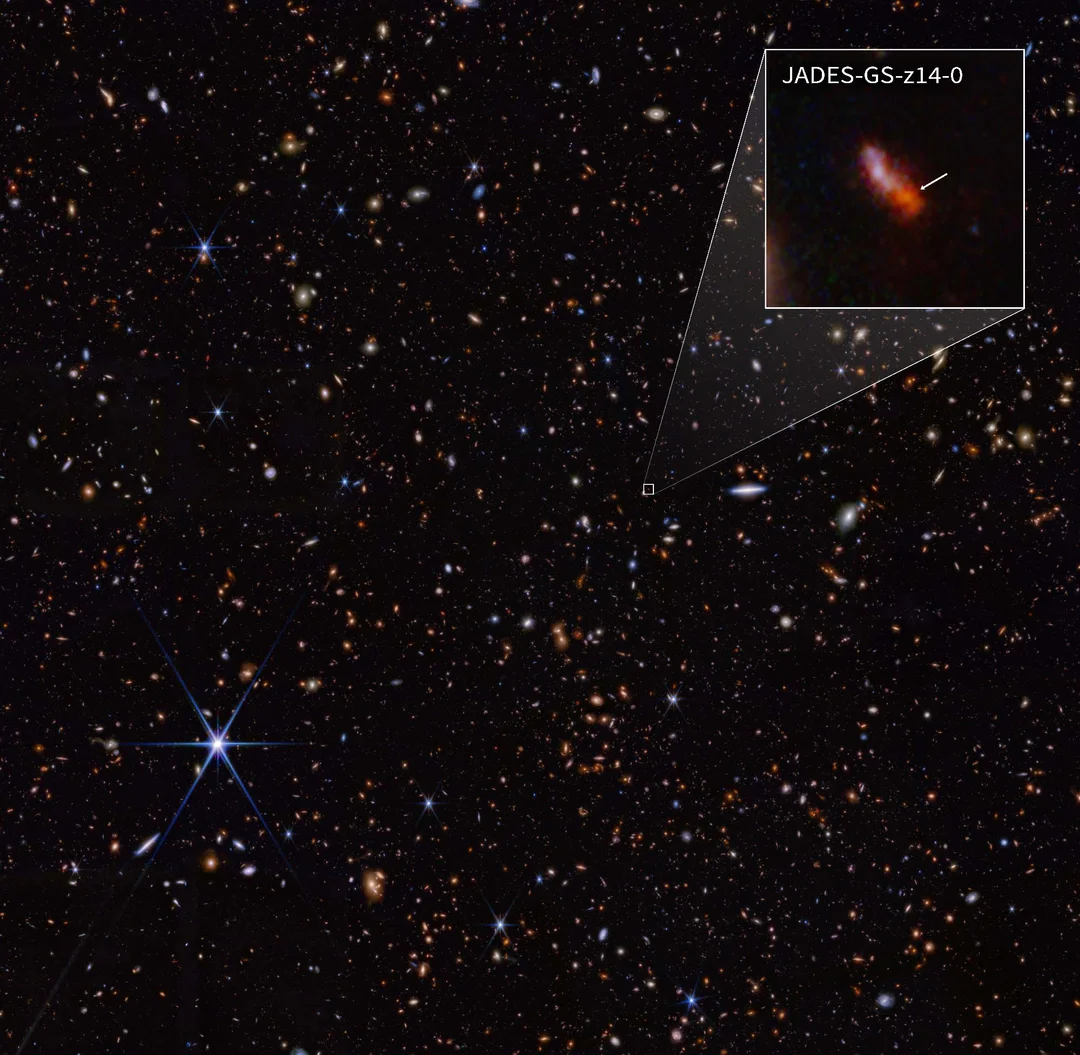
JWST Shatters Records, Spots Galaxy 280 Million Years After Big Bang: Unveiling the Early Universe
The James Webb Space Telescope (JWST) has once again pushed the boundaries of cosmic exploration, discovering the most distant galaxy ever detected, MoM-z14. This remarkable find offers a glimpse into the universe a mere 280 million years after the Big Bang, a period previously shrouded in mystery. The implications of this discovery are profound, challenging existing models of galaxy formation and evolution in the early universe.

Prior to JWST, our understanding of the early universe was severely limited. The Hubble Space Telescope, with its smaller mirror, could only glimpse galaxies from around 500 million years after the Big Bang. JWST's cutting-edge infrared technology and significantly larger mirror have revolutionized our ability to observe these ancient objects, lifting the veil on the universe's infancy.
MoM-z14, discovered as part of the Mirage or Miracle survey, boasts a redshift of z=14.44. This high redshift signifies that the light from this galaxy has been stretched considerably as it traveled across vast cosmic distances, placing it at an unprecedented proximity to the Big Bang. The discovery has surprised astronomers, as they expected to find very few galaxies at such an extreme redshift.

A paper titled "A Cosmic Miracle: A Remarkably Luminous Galaxy at zspec = 14.44 Confirmed with JWST," led by Rohan Naidu from MIT, details the discovery. The analysis reveals that MoM-z14's light primarily originates from stars rather than an active galactic nucleus (AGN). Furthermore, the galaxy's chemical composition bears similarities to ancient globular clusters in the Milky Way, suggesting a shared origin and evolutionary path for these stellar populations.
The presence of this bright, early galaxy challenges previous theoretical models that predicted a scarcity of such objects at these extreme distances. Scientists are now exploring potential explanations, including:
Optical Overperformance: JWST's enhanced light-gathering capabilities reveal galaxies that were previously too faint to detect.
Simulation Limitations: Previous simulations may not have accurately accounted for the rare, high-density regions where early galaxies could form.
Bursty Star-Formation: Early galaxies may have experienced intense bursts of star formation, temporarily boosting their brightness.
AGN Enhancements: Active galactic nuclei could contribute to the overall luminosity of some early galaxies.
The discovery of MoM-z14 also highlights the existence of two distinct types of early galaxies: point sources and extended sources. The relationship between their morphology and chemical composition could provide valuable insights into the evolutionary pathways of galaxies in the early universe.

While the JWST continues to unveil the secrets of the early universe, future missions like the Roman Space Telescope promise to further expand our knowledge. These observations will not only solidify existing findings but potentially uncover new mysteries, driving progress in our understanding of the cosmos.
The discovery of MoM-z14 is a monumental achievement in astronomy, providing a tantalizing glimpse into the universe's earliest moments. What other surprises await us as JWST continues its mission to explore the cosmic frontier? Share your thoughts and theories in the comments below!